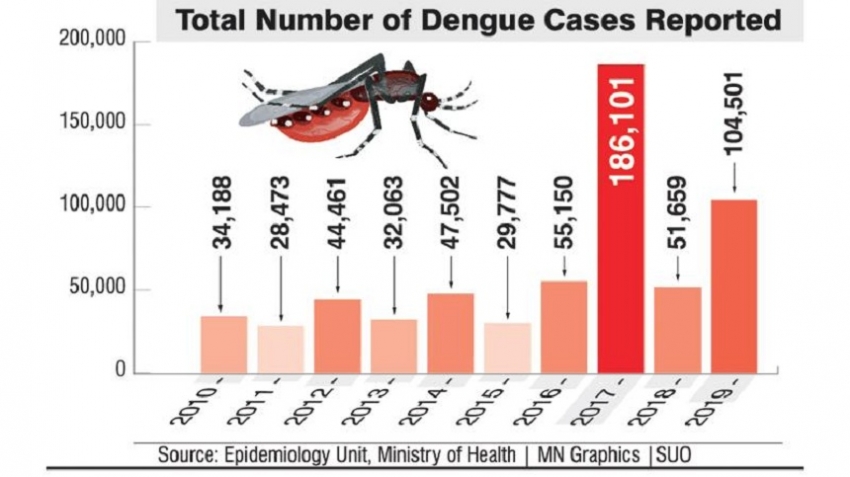Dengue fever (DF) and the more severe Dengue Haemorrhagic fever (DHF), is caused by one or more of the four serotypes of dengue viruses (DENV1, DENV2, DENV3 & DENV4) which had been co-circulating within the country, since the early 1990s. However, from time to time a previously latent serotype becomes dominant, driving the disease to epidemic proportions as in the year 2017, which recorded the highest dengue incidence so far, with 186,101 cases reported throughout the island. It was caused by serotype2 (DENV2).
According to the Epidemiology Unit’s latest update, 104,501 cases were reported during the period January 1 to December 31, 2019 double the 51,659 cases reported during the corresponding period of the previous year. “In Sri Lanka we have begun to see a pattern of the numbers rising and falling during alternate years. However, the main concern is the growing numbers over the years,” he said. Dengue patients are not only being reported from all districts of the country, the number of dengue incidences had been showing an upward trend during the last 10 years.
The NDCU plans to introduce bio-control measures to contain the spread of dengue by introducing a bacteria, which grows inside the body of the vector inhibiting the transmission of the disease. Wolbachia, the bacteria is to be introduced into the bodies of Aedes aegypti, identified as the main carrier of dengue virus in Sri Lanka. Known as an extremely common bacterium Wolbachia naturally occurs in 60 percent of insect species including some mosquitoes. However, Aedes aegypti and Aedes albopictus two mosquito species that carry the dengue virus don’t normally carry Wolbachia in their bodies.
Wolbachia, inside the body of the vector, competes with the virus for food and energy, making it hard for the virus to reproduce inside the mosquitoes, inhibiting the transmission of the virus. The bacterial is naturally passed on from one mosquito generation to another through eggs. Safe for humans and the environment the release of Wolabachia induced A. aegypti by the NDCU is scheduled to happen during the first two weeks of February.
Meanwhile, earlier in the week, Thilanga Sumathipala, State Minister of Technology and Innovation on a visit to the Arthur C. Clarke Institute of Modern Technology, explored the use of drone technology to eliminate dengue fever from the country.



















